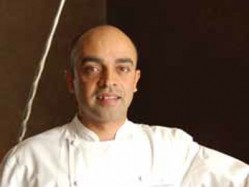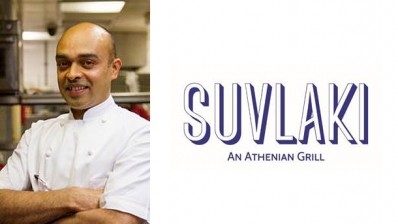Alfred Prasad: Pearls of Wisdom

My dad was a doctor, and there was a lot of pressure to be a doctor or an engineer. But an older student I looked up to went to hotel school in Bombay and that gave me the confidence to do something different.
We are at the tip of the iceberg in terms of Indian cuisine being taken overseas. As most people now know, Punjabi food is the dominant force here, but India has 30 states, five of which are larger than the UK. Every 100 miles or so the dialect and the food changes, so there’s plenty of inspiration.
Imli [Tamarind Collection’s mid-market Indian restaurant on Soho’s Wardour Street] needed freshening up. It’s now called Imli Street and is essentially a summary of my life experiences on the subcontinent. We’ve divided the dishes into four sections: food carts, coastal shacks, railway cuisine and beyond borders, which examines the influences other countries have had on Indian food.
Maximising lunchtime revenues is a huge challenge faced by all Indian restaurants. One of the key things at Zaika [the Kensington-based Indian fine-dining restaurant the Tamarind Collection bought in late 2011] will be to make lunchtimes work better, with lighter dishes and more flexible menus. At high-street level, more restaurants should be offering lunchtime-friendly items such as naanwiches and thalis.
We have to fight the perception that Indian food is greasy and heavy – that’s something that really frustrates me.
I attended hotel school for three years studying international food. Then I was hand-picked by ITC Sheraton and did two years of advanced chef training in New Delhi at the ITC Maurya, which is home to the legendary Bukhara restaurant. That was where my foundational knowledge of Indian cuisine was established.
I want to make a major statement with the reopening of Zaika. It’s about time there was some excitement created around top-level Indian cuisine.
Training non-Indian people to cook Indian food is a painfully slow process. It can be frustrating too: you invest a lot of effort in a person and three months later they leave to go and learn another cuisine.
My dad’s a Tamil Brahmin and was a strict vegetarian, while my mother’s an Anglo-Indian from Hyderabad, and is a strict carnivore. So, growing up, I was exposed to a very diverse range of food.
I worked for Atul Kochhar at Tamarind as his number two. He left to open Benares and I managed to retain the Michelin star. It’s almost a given that a restaurant loses its star when the chef leaves. Derek Bulmer actually cites what happened at Tamarind as an example – if the food is consistent there’s no reason to take away the star.
I grew up in some fairly remote areas. We had our own geese, chickens and turkeys. I spent time with my mother in the kitchen, plucking poultry, peeling prawns and so on. That stood me in good stead.
What people are looking for in terms of high-end Indian food in the US is not nearly as clear-cut as London. Most Americans’ benchmark of Indian food is an all-you-can eat lunchtime buffet. We chose
Newport Beach [in southern California] for Tamarind of London because the community there is better travelled.
We close Zaika after Christmas and will hopefully re-open in March 2014. The food will be more contemporary than Tamarind, I don’t want to use the term fusion but I guess that’s what it will be. It will reference regional Indian cuisine and offer a tasting menu.
Staffing in the US is tricky. It’s pretty much impossible to bring people from the subcontinent to work in the US. Add in the unions and the fact that California is one of the world’s most litigious places and you
have an HR nightmare.
The Indian railway is the second largest employer in the world after the People’s Liberation Army of China. The most exciting part of my holidays as a child was the journey and the food served aboard the train and at the station. The offering is a little better than the microwaved bacon butty and a KitKat that we get here.

















